Qing Li
age ~41
from Chicago, IL
- Also known as:
-
- Li Qing
- Qin Gli
Qing Li Phones & Addresses
- Chicago, IL
- Hammond, IN
- Rego Park, NY
- Philadelphia, PA
Name / Title
Company / Classification
Phones & Addresses
Partner
Qing Li
Pension, Health, and Welfare Funds
Pension, Health, and Welfare Funds
75 West End Avenue Apt. P18F, New York, NY 10023
Design Engineer
Interdigital, Inc.
Radio and Television Broadcasting and Communi...
Radio and Television Broadcasting and Communi...
781 3Rd Ave, Norristown, PA 19406
President
International Business Solutions Group Inc
Ret Radio/TV/Electronics
Ret Radio/TV/Electronics
88 E Broadway, New York, NY 10002
2129251886
2129251886
President
Eastern Construction Inc
Residential Construction
Residential Construction
306 W 23 Pl, Chicago, IL 60616
3128028898
3128028898
President
Li's Red Bowl, Inc
3980 Boat Clb Rd, Fort Worth, TX 76135
3103 Canongate Dr, Arlington, TX 76015
148 Madison St, New York, NY 10002
3103 Canongate Dr, Arlington, TX 76015
148 Madison St, New York, NY 10002
Owner
Cd International Co
Prepackaged Software Services
Prepackaged Software Services
88 E Broadway, New York, NY 10002
2129251886
2129251886
Director, President
Li's Best Buffet Inc
17 E Broadway, New York, NY 10002
3980 Boat Clb Rd, Fort Worth, TX 76135
3980 Boat Clb Rd, Fort Worth, TX 76135
Principal
Hong Li Chinese Restaurant
Eating Place
Eating Place
1821 Pitkin Ave, Brooklyn, NY 11212
Resumes

Qing Li Hoboken, NJ
view sourceWork:
Stevens Institute of Technology
Aug 2009 to 2000
Research & Teaching Assistant Accenture Executive Data Analytic Workshop
Hoboken, NJ
Sep 2014 to Sep 2014
Teaching Fellow MTA New York City Transit, Office of the President
New York, NY
Jan 2014 to Aug 2014
Data Science Support Aide Tecnolgico de Monterrey
Guadalajara, Jal.
Dec 2013 to Dec 2013
Teaching Fellow Lloyd's Register
Southampton
Jul 2013 to Sep 2013
Visiting Scholar, Global Technology Centre United Nations Headquarters, Dept of Economics and Social Affairs
New York, NY
Jan 2009 to Jun 2009
Intern, Population Division
Aug 2009 to 2000
Research & Teaching Assistant Accenture Executive Data Analytic Workshop
Hoboken, NJ
Sep 2014 to Sep 2014
Teaching Fellow MTA New York City Transit, Office of the President
New York, NY
Jan 2014 to Aug 2014
Data Science Support Aide Tecnolgico de Monterrey
Guadalajara, Jal.
Dec 2013 to Dec 2013
Teaching Fellow Lloyd's Register
Southampton
Jul 2013 to Sep 2013
Visiting Scholar, Global Technology Centre United Nations Headquarters, Dept of Economics and Social Affairs
New York, NY
Jan 2009 to Jun 2009
Intern, Population Division
Education:
Stevens Institute of Technology
Hoboken, NJ
2009 to 2015
PhD. in Systems Engineering Stevens Institute of Technology
Hoboken, NJ
2007 to 2009
M.S. in Financial Engineering Xi'an University of Technology
Xi'an, China
B.S. in Information and Computing Science
Hoboken, NJ
2009 to 2015
PhD. in Systems Engineering Stevens Institute of Technology
Hoboken, NJ
2007 to 2009
M.S. in Financial Engineering Xi'an University of Technology
Xi'an, China
B.S. in Information and Computing Science
Skills:
Programming: Python, SQL, C#, C++, JavaScript, D3.js<br/> Statistical Programming: R, SPSS, Minitab, Tableau<br/> Simulation: MATLAB Simulink, Arena, AnyLogic<br/> Others: MS Office Suite (Word, Excel, PowerPoint, Project, Visio), IBM Maximo<br/> Languages: Mandarin Chinese, English

Qing Li
view sourceWork:
PregPrep (Start-up)
Oct 2014 to 2000
Digital Marketing Manager The American Friends of Jamaica, Inc
Sep 2014 to 2000
Accountant Food Distribution in NYC
Sep 2014 to 2000
Volunteer Deere & Company
Jul 2014 to 2000
Entrepreneur/ Business Owner BMW Automotive Ltd
Jun 2013 to Jun 2014
Financial Assistant
Oct 2014 to 2000
Digital Marketing Manager The American Friends of Jamaica, Inc
Sep 2014 to 2000
Accountant Food Distribution in NYC
Sep 2014 to 2000
Volunteer Deere & Company
Jul 2014 to 2000
Entrepreneur/ Business Owner BMW Automotive Ltd
Jun 2013 to Jun 2014
Financial Assistant
Education:
Northeastern University
Shenyang, CN
Sep 2010 to Jun 2014
Bachelor of Business Administration New York University
New York, NY
M.S. in Integrated Marketing
Shenyang, CN
Sep 2010 to Jun 2014
Bachelor of Business Administration New York University
New York, NY
M.S. in Integrated Marketing

Qing Li Clark, NJ
view sourceWork:
Biometrician, Merck & Co., Inc
Dec 2010 to 2000 Merck & Co., Inc
Rahway, NJ
Jun 2010 to Aug 2010 Department of Mathematics, Washington University in St. Louis
2009 to 2009
Research assistant Cellular Injury and Adaption Laboratory, Washington University Medical School
2006 to 2006
Research assistant
Dec 2010 to 2000 Merck & Co., Inc
Rahway, NJ
Jun 2010 to Aug 2010 Department of Mathematics, Washington University in St. Louis
2009 to 2009
Research assistant Cellular Injury and Adaption Laboratory, Washington University Medical School
2006 to 2006
Research assistant
Education:
Washington University in St. Louis
St. Louis, MO
Jan 2005 to Jan 2010
Ph.D. in Mathematics (Concentrated on Statistics)
St. Louis, MO
Jan 2005 to Jan 2010
Ph.D. in Mathematics (Concentrated on Statistics)

Qing Li San Jose, CA
view sourceWork:
Guizhou Electric Power Test Research Institute
Jun 2012 to Jul 2012
Summer Internship in Guizhou Electric Power Test Research Institute,China
Jun 2012 to Jul 2012
Summer Internship in Guizhou Electric Power Test Research Institute,China
Education:
University of Pennsylvania
Philadelphia, PA
2011 to 2013
Master of Science in Engineering University of Manchester and North China Electric Power University
Sep 2007 to Jun 2011
Bachelor of Science in electronics
Philadelphia, PA
2011 to 2013
Master of Science in Engineering University of Manchester and North China Electric Power University
Sep 2007 to Jun 2011
Bachelor of Science in electronics
Skills:
VLSI design skills: Digital/Analog Circuit Design, Standard Cell Design, Physical Design, Cadence(CAD) Tools, soldering. Equipments: Multi-meters, oscilloscopes, power supplies, and basic lab equipment. Others: C, Python, Java, PHP, Verilog, Perl, MATLAB, Unix/Linux System, Web Design.
Vehicle Records
-
Qing Li
view source -
Address:3716 S Hereford Ln, Philadelphia, PA 19114
-
Phone:2676323396
-
VIN:5J6RM4H79CL070307
-
Make:HONDA
-
Model:CR-V
-
Year:2012
-
Qing Li
view source -
Address:3701 Conshohocken Ave APT 1115, Philadelphia, PA 19131
-
VIN:4T1CE30P17U755332
-
Make:TOYOTA
-
Model:CAMRY SOLARA
-
Year:2007
Isbn (Books And Publications)



Advances In Web-age Information Management: 5th International Conference, WAIMN 2004, Dalian, China, July 15-17, 2004, Proceedings
view sourceAuthor
Qing Li
ISBN #
3540224181

Advances In Web-based Learning-icwl 2004: Third International Conference, Beijing, China, August 8-11, 2004, Proceedings
view sourceAuthor
Qing Li
ISBN #
3540225420

Advances in Web-based Learning- ICWL 2005: 4th International Conference, Hong Kong, China, July 31 - August 3, 2005, Proceedings
view sourceAuthor
Qing Li
ISBN #
3540278958

Advances in Knowledge Discovery and Data Mining: 5th Asia-Pacific Conference, Pakdd 2001 Hong Kong, China, April 16-18, 2001 Proceedings
view sourceAuthor
Qing Li
ISBN #
3540419101

Advances in Web-Based Learning: First International Conference, Icwl 2002, Hong Kong, China, August 2002 Proceedings
view sourceAuthor
Qing Li
ISBN #
3540440410

Advances in Web Based Learning - ICWL 2006 : 5th International Conference, Penang, Malaysia, July 19-21, 2006: Revised Papers
view sourceAuthor
Qing Li
ISBN #
3540490272
Medicine Doctors

Qing E Li, Flushing NY - DPT (Diphtheria, pertussis, tetanus)
view sourceSpecialties:
Physical Therapy
Acupuncture
Acupuncture
Address:
14105 Northern Blvd Suite 6F, Flushing, NY 11354
Languages:
English

Qing Li
view sourceSpecialties:
Internal Medicine
Work:
Medstar Internal Medicine
9000 Franklin Sq Dr, Rosedale, MD 21237
4437776873 (phone), 4437778344 (fax)
9000 Franklin Sq Dr, Rosedale, MD 21237
4437776873 (phone), 4437778344 (fax)
Languages:
English
Description:
Ms. Li works in Rosedale, MD and specializes in Internal Medicine.

Qing K. Li
view sourceSpecialties:
Anatomic Pathology & Clinical Pathology
Work:
South Bend Medical FoundationSouth Bend Medical Foundation Pathology
530 N Lafayette Blvd, South Bend, IN 46601
5742344176 (phone), 5742341561 (fax)
530 N Lafayette Blvd, South Bend, IN 46601
5742344176 (phone), 5742341561 (fax)
Languages:
English
Description:
Dr. Li works in South Bend, IN and specializes in Anatomic Pathology & Clinical Pathology. Dr. Li is affiliated with Memorial Hospital Of South Bend.
Us Patents
-
Method And Apparatus For Providing An Internet Protocol Multimedia Subsystem Triggering Service
view source -
US Patent:20130279373, Oct 24, 2013
-
Filed:Apr 18, 2013
-
Appl. No.:13/865792
-
Inventors:Michael F. Starsinic - Newtown PA, US
Chonggang Wang - Princeton NJ, US
Kamel M. Shaheen - King of Prussia PA, US
Guang Lu - Montreal, CA
Dale N. Seed - Allentown PA, US
Qing Li - Princeton Junction NJ, US
Lijun Dong - San Diego CA, US -
International Classification:H04M 15/00
-
US Classification:370259
-
Abstract:A method and apparatus are described for providing triggering services over multiple access networks. A triggering service server (TSS) architecture includes a triggering identity function (TIF) which maintains a database of device and application identifier mappings across multiple access networks, triggering capabilities and triggering preferences. The TSS also includes a triggering decision function (TDF) that uses information from the TIF and determines how triggers should be performed towards a device and/or an application hosted on a particular device. The TSS also includes triggering gateways (T-GWs) that perform triggering in different domains. A “not-registered-triggerable” state may be used to indicate whether an entity, such as a device, application or user can receive triggers although it is not registered in a specific access network. Methods and apparatus are also described for implementing various unassisted triggering and assisted triggering procedures using wireless transmit/receive units (WTRUs), application servers (ASs) and service capability servers (SCSs).
-
Time And Frequency Tracking Reference Signals In New Radio
view source -
US Patent:20220416972, Dec 29, 2022
-
Filed:Jun 23, 2022
-
Appl. No.:17/847644
-
Inventors:- Wilmington DE, US
Lakshmi R. Iyer - King of Prussia PA, US
Joseph M. Murray - Schwenksville PA, US
Allan Y. Tsai - Boonton NJ, US
Guodong Zhang - Woodbury NY, US
Qing Li - Princeton Junction NJ, US -
International Classification:H04L 5/00
H04L 27/26
H04W 16/14
H04W 72/04 -
Abstract:In NR, a slot structure of a UE may be dynamic due the number of symbols of PDCCH and whether the slot has UL data, among other considerations. Additionally, to support multi-TRP/multi-panel/multi-BWP operation, a UE may be configured with multiple TRSs, and when a UE needs to receive multiple TRSs in the same slot, efficient signaling of the TRSs is important because of the high overhead involved. During a transmission, a UE may need to do beam switching when there is a beam failure, but existing systems do not have mechanisms for the UE to synchronize time and frequency with a new beam. Further, when a UE switches to a new beam, the effect on scheduled TRS transmission for old beams is unclear. Fine frequency and time tracking may also be required during an initial access procedure. Existing NR systems do not address how a UE may perform time and frequency tracking during an initial access procedure. Additionally, URLLC data may need to be transmitted to a UE immediately in an NR system. Existing NR systems do not address sending a TRS to a UE with URLLC data. Embodiments described herein address these and other issues.
-
Nr Sidelink Group Communication
view source -
US Patent:20220386081, Dec 1, 2022
-
Filed:Aug 13, 2020
-
Appl. No.:17/628761
-
Inventors:- Wilmington DE, US
Pascal M. ADJAKPLE - Great Neck NY, US
Qing LI - Princeton Junction NJ, US
Guodong ZHANG - Woodbury NY, US
Yifan LI - Conshohocken PA, US
Joseph M. MURRAY - Schwenksville PA, US
Rocco DI GIROLAMO - Laval, CA -
International Classification:H04W 4/08
H04W 72/00 -
Abstract:A Sidelink AS group management function is disclosed for a UE to discover group members and organize them into AS layer sub-groups based on the AS layer group context information. A centralized Sidelink AS group management is disclosed that the Sidelink AS Group Manager discovers group members and organizes them into AS layer sub-groups for a UE. A Subgroup formation and configuration procedure is disclosed that SL AS Group Manager organizes the ULG into AS layer sub-groups, configures UE-to-UE relays for each UE in the ULG and sends the AS group management information to the UE. A distributed Sidelink AS group management method is disclosed that each UE discovers its group members and organizes the ULG into AS layer sub-groups. New Layer 2 structures and procedures are disclosed to enhance bearer management for Sidelink groupcast communications.
-
Sidelink Drx Configuration For Unicast
view source -
US Patent:20220304103, Sep 22, 2022
-
Filed:Mar 7, 2022
-
Appl. No.:17/653852
-
Inventors:- San Diego CA, US
Junyi LI - Fairless Hills PA, US
Qing LI - Princeton Junction NJ, US
Dan VASSILOVSKI - Del Mar CA, US -
International Classification:H04W 76/28
H04W 76/14 -
Abstract:A first user equipment (UE) transmits, to a second UE, a transmission configuration indicating first timing information for a discontinuous reception (DRX) configuration for sidelink transmission from the first UE. The first UE transmits, to the second UE, a reception configuration indicating second timing information for the DRX configuration for sidelink reception by the first UE. The first UE receives a response from the second UE confirming or rejecting the DRX configuration.
-
Nr V2X Mobility
view source -
US Patent:20220279393, Sep 1, 2022
-
Filed:Aug 27, 2020
-
Appl. No.:17/637600
-
Inventors:- Wilmington DE, US
Pascal M. ADJAKPLE - Great Neck NY, US
Zhuo CHEN - Claymont DE, US
Qing LI - Princeton Junction NJ, US
Guodong ZHANG - Woodbury NY, US
Joseph M. MURRAY - Schwenksville PA, US -
International Classification:H04W 36/00
H04W 36/08
H04W 72/02
H04W 72/10 -
Abstract:UEs' mobility may have a significant impact on sidelink communications and Uu mobility procedures of UEs participating in SL communication or SL Group Communication. Methods devised to optimize handover procedures, cell reselection procedures, and transition to RRC_IDLE and RRC_INACTIVE for UEs with ongoing SL communications. Methods are disclosed herein for PLMN selection for UEs requiring sidelink communication or with active sidelink communication, as well as, methods to provide priority-based resource allocation while using exceptional transmit resource pools. Also, provided are SL group management procedures to deal with impacts of UE mobility.
-
Apparatus, System And Method For Performing Two-Step Rach
view source -
US Patent:20220272760, Aug 25, 2022
-
Filed:Aug 4, 2020
-
Appl. No.:17/628748
-
Inventors:- Wilmington DE, US
Pascal M. ADJAKPLE - Great Neck NY, US
Lakshmi R. IYER - King of Prussia PA, US
Mohamed AWADIN - Plymouth Meeting PA, US
Patrick SVEDMAN - Stockholm, SE
Qing LI - Princeton Junction NJ, US
Allan Y. TSAI - Boonton NJ, US
Yifan LI - Conshohocken PA, US
Rocco DI GIROLAMO - Laval, CA
Zhuo CHEN - Claymont DE, US
Guodong ZHANG - Woodbury NY, US -
International Classification:H04W 74/08
-
Abstract:A first apparatus in a wireless communication system, the first apparatus including circuitry configured to trigger a Random Access Channel (RACH) procedure; select a two-step RACH procedure from among a plurality of RACH procedures as a RACH type to be performed; select a MsgA transmission resource; transmit a MsgA; and monitor for a network response from a second apparatus.
-
Pbch Timing And Aspects Of Polar Code Design
view source -
US Patent:20220231784, Jul 21, 2022
-
Filed:Mar 11, 2022
-
Appl. No.:17/692258
-
Inventors:Lakshmi R. Iyer - King of Prussia PA, US
Allan Y. Tsai - Boonton NJ, US
Qing Li - Princeton Junction NJ, US
Joseph M. Murray - Schwenksville PA, US -
Assignee:IPLA Holdings Inc. - New York NY
-
International Classification:H04L 1/00
H04L 5/00 -
Abstract:PBCH design may affect timing indication in a wireless network and polar code interleaver design, among other things. Mechanisms may indicate half frame timing though de-modulation reference signal sequence initialization, de-modulation reference signal mapping order, or de-modulation reference signal resource element location.
-
Drx Configuration In New Radio
view source -
US Patent:20220191793, Jun 16, 2022
-
Filed:Mar 27, 2020
-
Appl. No.:17/442728
-
Inventors:- Wilmington DE, US
Pascal M. ADJAKPLE - Great Neck NY, US
Stephen E. TERRY - Northport NY, US
Rocco DI GIROLAMO - Laval, CA
Lakshmi R. IYER - King of Prussia PA, US
Guodong ZHANG - Woodbury NY, US
Patrick SVEDMAN - Stockholm, SE
Yifan LI - Conshohocken PA, US
Allan Y. TSAI - Boonton NJ, US
Zhuo CHEN - Claymont DE, US
Mohamed AWADIN - Plymouth Meeting PA, US
Qing LI - Princeton Junction NJ, US -
International Classification:H04W 52/02
H04W 72/04 -
Abstract:A first apparatus including a processor; and a memory storing computer-executable instructions that when executed by the processor cause the first apparatus to: receive, from a second apparatus, information including Discontinuous Reception (DRX) configurations, wherein one of the DRX configurations is a first active DRX configuration and other DRX configurations are candidate DRX configurations; perform Physical Downlink Control Channel (PDCCH) monitoring in accordance with the first active DRX configuration; monitor signaling from the second apparatus for an indication that is used for adapting the first active DRX configuration; receive from the second apparatus an indication for adapting the first active DRX configuration into a second active DRX configuration; based on the indication for adapting the first active DRX configuration into the second active DRX configuration, adapt the first active DRX configuration into the second active DRX configuration; and perform PDCCH monitoring in accordance with the second active DRX configuration.
Plaxo

Li Qing
view sourceFlickr
Myspace
Googleplus

Qing Li
Work:
Massachusetts Institute of Technology - Research Assistant (2010)
Right Question Project - Intern (2010-2010)
Right Question Project - Intern (2010-2010)
Education:
Massachusetts Institute of Technology - Management
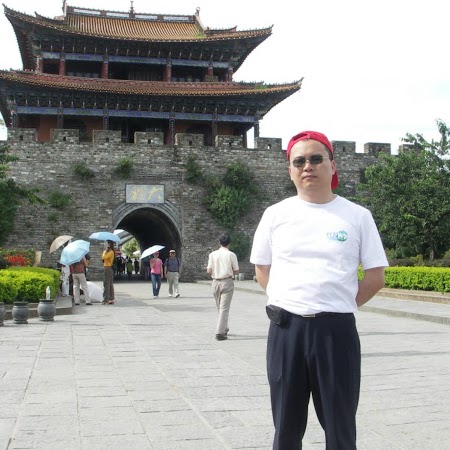
Qing Li
Work:
City University of Hong Kong

Qing Li
Education:
China University of Geoscience - Geology

Qing Li
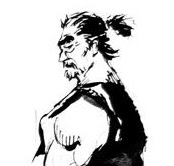
Qing Li

Qing Li

Qing Li
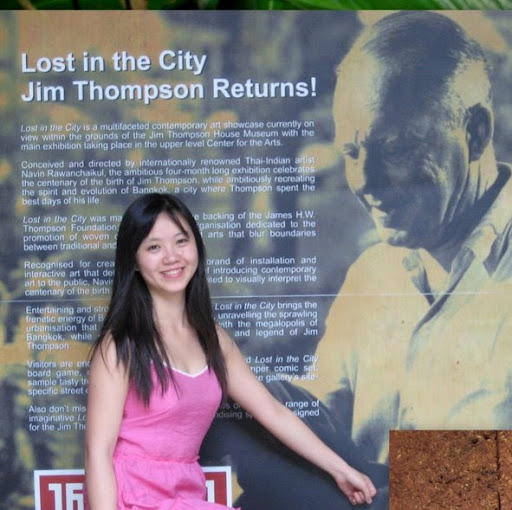
Qing Li
Classmates

Qing Li
view sourceSchools:
St. John's Kilmarnock School Waterloo Morocco 2001-2005

St. John's Kilmarnock Sc...
view sourceGraduates:
Brent Diefenbacher (1999-2003),
Braden Jennings (1999-2003),
Qing Li (2001-2005),
Laura Slavniek (1987-1992),
Mike Baier (1993-1998)
Braden Jennings (1999-2003),
Qing Li (2001-2005),
Laura Slavniek (1987-1992),
Mike Baier (1993-1998)

Richard Montgomery High S...
view sourceGraduates:
James Jacocks (1960-1964),
Patricia Willis (1959-1963),
Jonathan Bridgford (1961-1965),
Kevin Spain (1976-1980),
Qing LI (2003-2007)
Patricia Willis (1959-1963),
Jonathan Bridgford (1961-1965),
Kevin Spain (1976-1980),
Qing LI (2003-2007)

New Utrecht High School, ...
view sourceGraduates:
Raphael Volmar (1982-1986),
Charles Schiffer (1958-1962),
Yu Qing LI (1985-1989),
Carol Sagona (1982-1986)
Charles Schiffer (1958-1962),
Yu Qing LI (1985-1989),
Carol Sagona (1982-1986)

School in the Gardens Pub...
view sourceGraduates:
LI Qing (1995-1999),
Muhammad Hussain (1998-2002),
Moniruzzaman Nil (1996-2000),
Yang Shen (1985-1989),
Dominick Bermudez (1994-1997)
Muhammad Hussain (1998-2002),
Moniruzzaman Nil (1996-2000),
Yang Shen (1985-1989),
Dominick Bermudez (1994-1997)

Grace Christian Academy, ...
view sourceGraduates:
LI Qing (1993-1997),
Brandy Ashford (1992-1996),
Star Stephens (1994-1998),
Jamie Wilson (1990-1994)
Brandy Ashford (1992-1996),
Star Stephens (1994-1998),
Jamie Wilson (1990-1994)
Youtube

Qing Qing Li
view source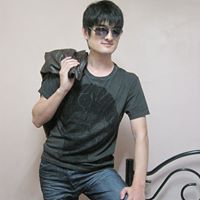
Qing Lin Li
view source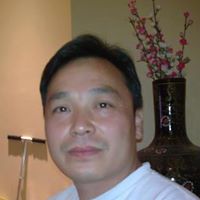
Qing Zhi Li
view source
Qing Ju Li
view source
Qing Ping Li
view source
Qing Li
view source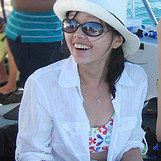
Qing Li
view source
Xiu Qing Li
view sourceGet Report for Qing Li from Chicago, IL, age ~41
















